Do you have a question about the Samsung C H71 Series and is the answer not in the manual?
Ensure adequate space around the product for ventilation and heat dissipation.
Important safety warnings and symbols to prevent hazards and damage.
Guidelines for storing the product to prevent damage, especially from humidifiers.
Explanation of warning symbols indicating potential hazards or important information.
Instructions on how to properly clean the monitor's panel and exterior.
Critical safety guidelines regarding power cords, plugs, and electrical connections.
Warnings and precautions to take during the physical installation of the product.
Key warnings and precautions for safe and proper daily operation of the monitor.
Identification and description of the monitor's physical components and controls.
Explanation of the monitor's control panel, including the JOG button and Power LED.
Description of direct key functions for quick access to settings like brightness and Eye Saver Mode.
Details on using function keys to navigate menus and access various monitor settings.
How to adjust fundamental image settings like brightness, contrast, and sharpness.
Overview of the ports located on the back of the monitor and their functions.
Instructions on how to adjust the tilt angle of the monitor for optimal viewing.
Guidance on how to install and use an anti-theft locking device for security.
Important safety tips for safely moving the monitor without causing damage.
Step-by-step instructions for attaching the monitor stand securely.
Step-by-step instructions for safely removing the monitor stand.
Essential checks before connecting cables to prevent device damage.
Methods and considerations for connecting the monitor to a PC.
Detailed steps for connecting the monitor to a PC or source device via HDMI.
Detailed steps for connecting the monitor via a DisplayPort to Mini DisplayPort cable.
Instructions for connecting the monitor to a power source.
Steps for tidying up and organizing the connected cables for a clean setup.
Guidance on maintaining a correct posture for comfortable and healthy monitor usage.
Instructions on installing necessary drivers for optimal monitor performance.
How to set the monitor to its optimal resolution for the best display quality.
Explanation of different picture quality modes for various environments.
How to adjust the monitor's brightness level for optimal viewing.
How to adjust the monitor's contrast for better image clarity.
How to adjust the monitor's sharpness for clearer or softer image outlines.
Guide to adjusting screen tint, saturation, and color temperature.
How to enhance picture details and vividness, especially for low-resolution images.
Adjusting black levels for improved image quality when using HDMI connection.
Features and benefits of the Eye Saver Mode for reducing eye strain.
Optimizing screen settings specifically for an enhanced gaming experience.
Adjusting response time for smoother and more natural video playback.
How to change the picture size and aspect ratio for different content.
Adjusting horizontal and vertical position for optimal screen fit.
Configuring the transparency level of the On-Screen Display (OSD) menu.
Adjusting the position of the On-Screen Display (OSD) menu on the screen.
Selecting the display language for the On-Screen Display (OSD) menu.
Setting how long the On-Screen Display (OSD) menu remains visible.
Explanation of FreeSync for eliminating screen tearing and lag during gameplay.
Reducing power consumption by adjusting monitor panel electric current.
Setting a timer for the monitor to automatically power off.
Selecting the DisplayPort version for optimal signal compatibility.
Configuring automatic or manual recognition of input signals.
Controlling the response rate of buttons when pressed.
Configuring the behavior of the power LED (working or stand-by).
Restoring all product settings to their original factory defaults.
Viewing current input source, frequency, and resolution information.
Enabling users to partition the monitor screen for multitasking.
Minimum OS and hardware specifications for installing the Easy Setting Box software.
Potential issues affecting Easy Setting Box installation due to system components.
Guidelines for testing the product before contacting customer service.
Steps to perform a self-diagnosis test to check product functionality.
Troubleshooting 'Not Optimum Mode' messages and display problems.
Resolving screen issues like flickering or blank screens during PC connection.
Diagnosing and fixing issues like no power, blank screen, or check signal messages.
Solutions for distorted images, blurriness, brightness, and color inconsistencies.
How to exit power-saving mode when the screen is blank.
Tips for improving text clarity and sharpness in Windows OS.
Troubleshooting choppy video playback on the monitor.
Addressing beeping sounds from the PC during booting.
Instructions on how to change the display frequency via PC graphics settings.
Instructions on how to change the display resolution via PC settings.
Guide on how to enable or disable power-saving mode on the PC.
Technical details including model name, size, display area, and pixel pitch.
Information on power supply requirements and available signal connectors.
Operating and storage temperature and humidity requirements.
Details on the monitor's Plug-and-Play compatibility with PC systems.
Explanation of pixel variations and their impact on product performance.
Conditions under which service fees may be charged, even if under warranty.
Examples of issues considered non-defects, not covered by standard warranty.
Product damage caused by customer mishandling, incorrect use, or unauthorized repair.
Situations like natural disasters or consumable component usage not covered.
Ensure adequate space around the product for ventilation and heat dissipation.
Important safety warnings and symbols to prevent hazards and damage.
Guidelines for storing the product to prevent damage, especially from humidifiers.
Explanation of warning symbols indicating potential hazards or important information.
Instructions on how to properly clean the monitor's panel and exterior.
Critical safety guidelines regarding power cords, plugs, and electrical connections.
Warnings and precautions to take during the physical installation of the product.
Key warnings and precautions for safe and proper daily operation of the monitor.
Identification and description of the monitor's physical components and controls.
Explanation of the monitor's control panel, including the JOG button and Power LED.
Description of direct key functions for quick access to settings like brightness and Eye Saver Mode.
Details on using function keys to navigate menus and access various monitor settings.
How to adjust fundamental image settings like brightness, contrast, and sharpness.
Overview of the ports located on the back of the monitor and their functions.
Instructions on how to adjust the tilt angle of the monitor for optimal viewing.
Guidance on how to install and use an anti-theft locking device for security.
Important safety tips for safely moving the monitor without causing damage.
Step-by-step instructions for attaching the monitor stand securely.
Step-by-step instructions for safely removing the monitor stand.
Essential checks before connecting cables to prevent device damage.
Methods and considerations for connecting the monitor to a PC.
Detailed steps for connecting the monitor to a PC or source device via HDMI.
Detailed steps for connecting the monitor via a DisplayPort to Mini DisplayPort cable.
Instructions for connecting the monitor to a power source.
Steps for tidying up and organizing the connected cables for a clean setup.
Guidance on maintaining a correct posture for comfortable and healthy monitor usage.
Instructions on installing necessary drivers for optimal monitor performance.
How to set the monitor to its optimal resolution for the best display quality.
Explanation of different picture quality modes for various environments.
How to adjust the monitor's brightness level for optimal viewing.
How to adjust the monitor's contrast for better image clarity.
How to adjust the monitor's sharpness for clearer or softer image outlines.
Guide to adjusting screen tint, saturation, and color temperature.
How to enhance picture details and vividness, especially for low-resolution images.
Adjusting black levels for improved image quality when using HDMI connection.
Features and benefits of the Eye Saver Mode for reducing eye strain.
Optimizing screen settings specifically for an enhanced gaming experience.
Adjusting response time for smoother and more natural video playback.
How to change the picture size and aspect ratio for different content.
Adjusting horizontal and vertical position for optimal screen fit.
Configuring the transparency level of the On-Screen Display (OSD) menu.
Adjusting the position of the On-Screen Display (OSD) menu on the screen.
Selecting the display language for the On-Screen Display (OSD) menu.
Setting how long the On-Screen Display (OSD) menu remains visible.
Explanation of FreeSync for eliminating screen tearing and lag during gameplay.
Reducing power consumption by adjusting monitor panel electric current.
Setting a timer for the monitor to automatically power off.
Selecting the DisplayPort version for optimal signal compatibility.
Configuring automatic or manual recognition of input signals.
Controlling the response rate of buttons when pressed.
Configuring the behavior of the power LED (working or stand-by).
Restoring all product settings to their original factory defaults.
Viewing current input source, frequency, and resolution information.
Enabling users to partition the monitor screen for multitasking.
Minimum OS and hardware specifications for installing the Easy Setting Box software.
Potential issues affecting Easy Setting Box installation due to system components.
Guidelines for testing the product before contacting customer service.
Steps to perform a self-diagnosis test to check product functionality.
Troubleshooting 'Not Optimum Mode' messages and display problems.
Resolving screen issues like flickering or blank screens during PC connection.
Diagnosing and fixing issues like no power, blank screen, or check signal messages.
Solutions for distorted images, blurriness, brightness, and color inconsistencies.
How to exit power-saving mode when the screen is blank.
Tips for improving text clarity and sharpness in Windows OS.
Troubleshooting choppy video playback on the monitor.
Addressing beeping sounds from the PC during booting.
Instructions on how to change the display frequency via PC graphics settings.
Instructions on how to change the display resolution via PC settings.
Guide on how to enable or disable power-saving mode on the PC.
Technical details including model name, size, display area, and pixel pitch.
Information on power supply requirements and available signal connectors.
Operating and storage temperature and humidity requirements.
Details on the monitor's Plug-and-Play compatibility with PC systems.
Explanation of pixel variations and their impact on product performance.
Conditions under which service fees may be charged, even if under warranty.
Examples of issues considered non-defects, not covered by standard warranty.
Product damage caused by customer mishandling, incorrect use, or unauthorized repair.
Situations like natural disasters or consumable component usage not covered.
| Resolution | 2560 x 1440 (QHD) |
|---|---|
| Panel Type | VA |
| Curvature | 1800R |
| Response Time | 4ms (GTG) |
| Aspect Ratio | 16:9 |
| Brightness | 300 cd/m² |
| AMD FreeSync | Yes |
| Viewing Angle | 178°(H)/178°(V) |
| Contrast Ratio | 3000:1 |
| Connectivity | DisplayPort, HDMI |
| Color Support | 16.7 million colors, 125% sRGB |
| Ports | 1 x DisplayPort, 1 x HDMI, Headphone |
| VESA Mount | 100 x 100 mm |
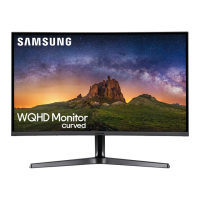
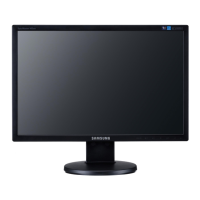
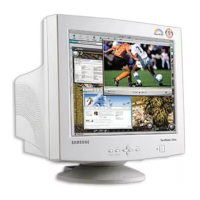
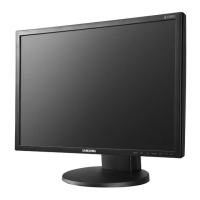
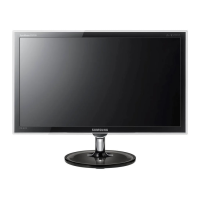
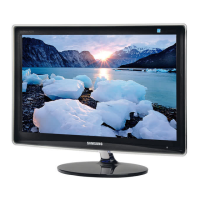




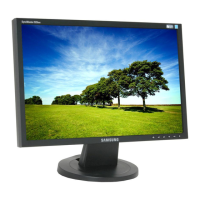
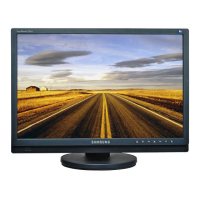
